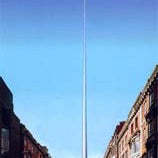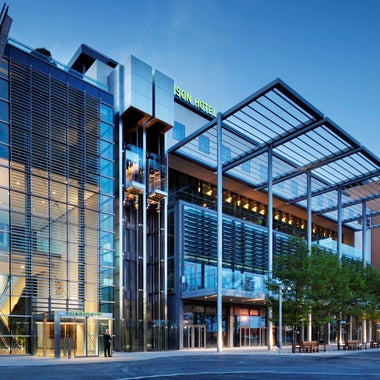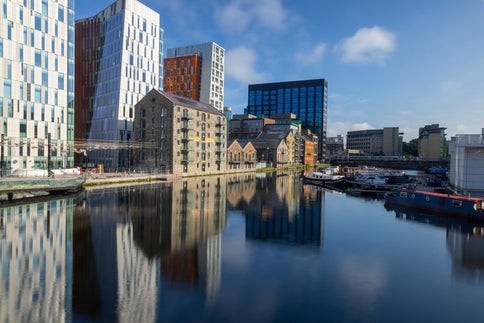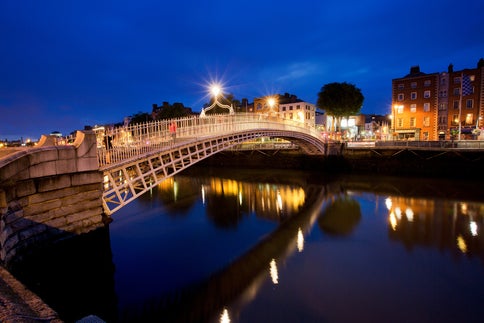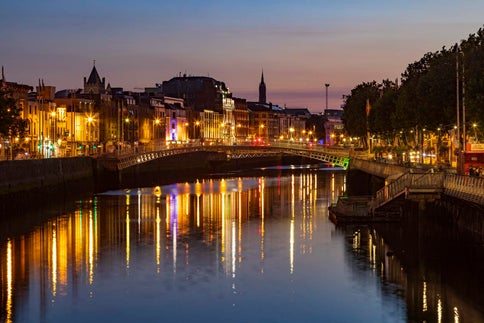- Home
- Traveller guides
- Take a walk through U2’s Dublin
Take a walk through U2’s Dublin
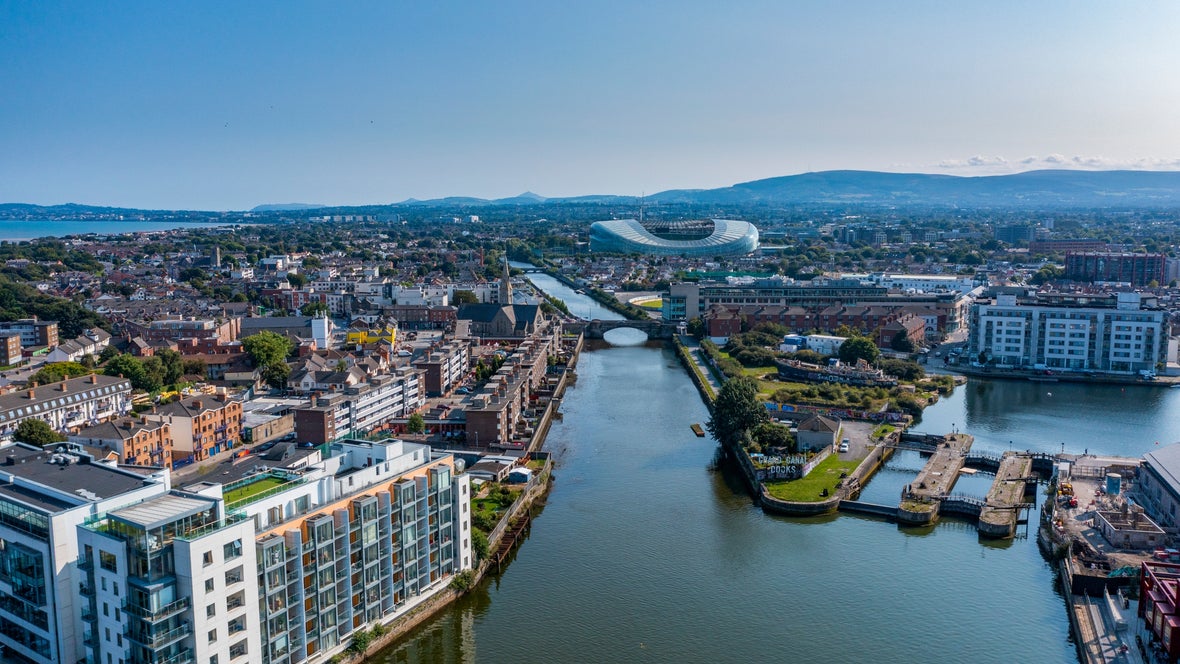
Dublin is known for its live gigs, and many musicians who’ve made their start here go on to play on the world stage.
But claiming the top spot for ‘local act made good’ is U2, with their huge global success. Retrace their roots and see the band’s old haunts around the city. On our trail you can stroll through U2’s Dublin and visit the places that inspired the four lads to greatness.
Croke Park
What better place to start than the Dublin group’s spiritual home? Bono and the boys have been selling out the country’s largest stadium since The Unforgettable Fire tour way back in 1985. Some decades on, the sporting arena has undergone a major expansion and update. You can take your experience of the city to new heights with the Skyline Tour and its breathtaking panoramas of Dublin. For traditional Irish sports fans, the stadium tour and GAA (Gaelic Athletic Association) Museum provide extra excitement.
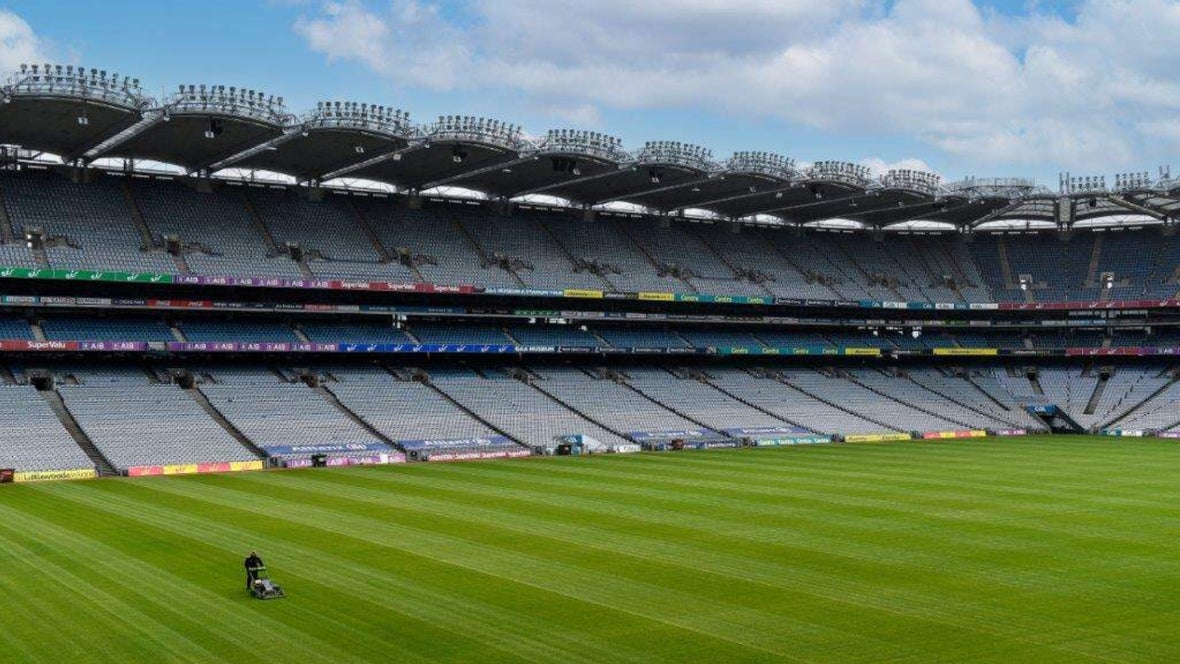
North Earl Street / Talbot Street
Stroll this busy strip leading from The Spire to Connolly Station to find several points of interest for U2 enthusiasts. The Bonavox hearing aid store at number 9 North Earl Street inspired Paul Hewson to adopt the name ‘Bono’, and the former Moran’s Hotel (now O’Shea’s) on adjoining Talbot Street was a venue of choice for the band in the 70s. Talbot Street was also on Bono’s mind when he wrote the powerful Raised by Wolves, a song about the bomb that went off here in 1974 during the Troubles.
North Wall Quay
On the River Liffey near Dublin Port, head for North Wall Quay and the 3Arena. U2 played here in 2018 on their Experience + Innocence tour. But back in the 80s when this was known as The Point Depot, highlights from a trio of shows were captured in a live album and the venue featured in the film Rattle and Hum. The music theme continues in the nearby Gibson Hotel, namesake of the famed brand of electric guitars, and there are great views of the city skyline from its Hemi bar and restaurant.
The Gibson Hotel
Hanover Quay
Cross the Samuel Beckett Bridge to the Southside and venture to a place on every U2 fan’s pilgrimage. Hanover Quay Studios was a mainstay of the band for over 20 years, instantly recognisable as the low rise building decorated with graffiti in praise of their legendary career. A short walk away at 22 Windmill Lane, parts of The Joshua Tree were recorded and mixed in 1986. Though that original building is gone, Windmill Lane Recording Studios lives on in Ringsend (around the corner from Hanover Quay), and you can stop by for a tour.
There’s a lot of regeneration underway in the area as shiny new buildings spring up, but in the meantime there’s plenty of architecture to catch the eye including the Bord Gáis Energy Theatre and the Marker Hotel. The latter’s Rooftop Bar and Terrace provides stunning views of the Aviva Stadium and Boland’s Quay.
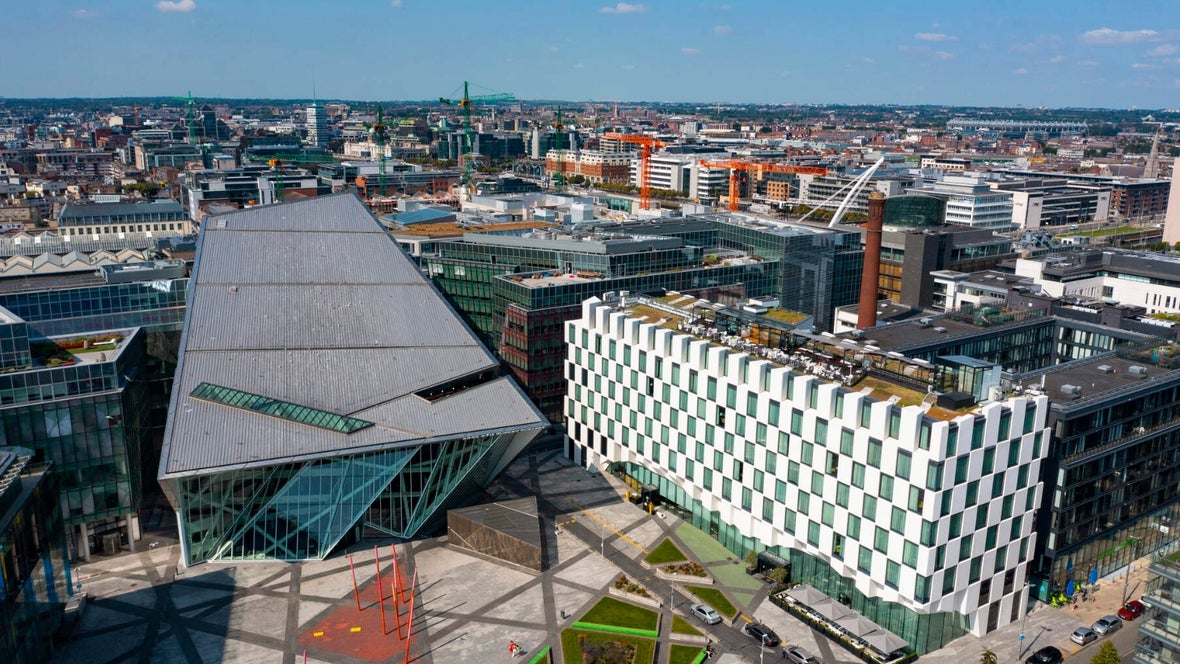
Baggot Street / St Stephen’s Green
Walk to Stephen’s Green via Baggot Street and pause at the site of the Baggot Inn along the way. It’s been given a facelift in recent years and is now a Mexican restaurant, but in a previous incarnation this was an important place in the U2 story. It was here in 1978 that the fledgling group booked a breakthrough residency that set them on the road to a glittering career.
Carry on to The Little Museum of Dublin where there’s an excellent permanent exhibition to honour the band. U2: Made in Dublin features memorabilia like the original McGonagle’s sign that graced an early venue, and a Trabant car painted by Dublin artist Maser from their Achtung Baby days. Across the road in leafy St Stephen’s Green, Bono and the Edge grazed lambs after being awarded the Freedom of Dublin in 2000 (freemen of the city having the right to pasture sheep there). In good weather you too can stop by with a picnic for some grazing of your own.
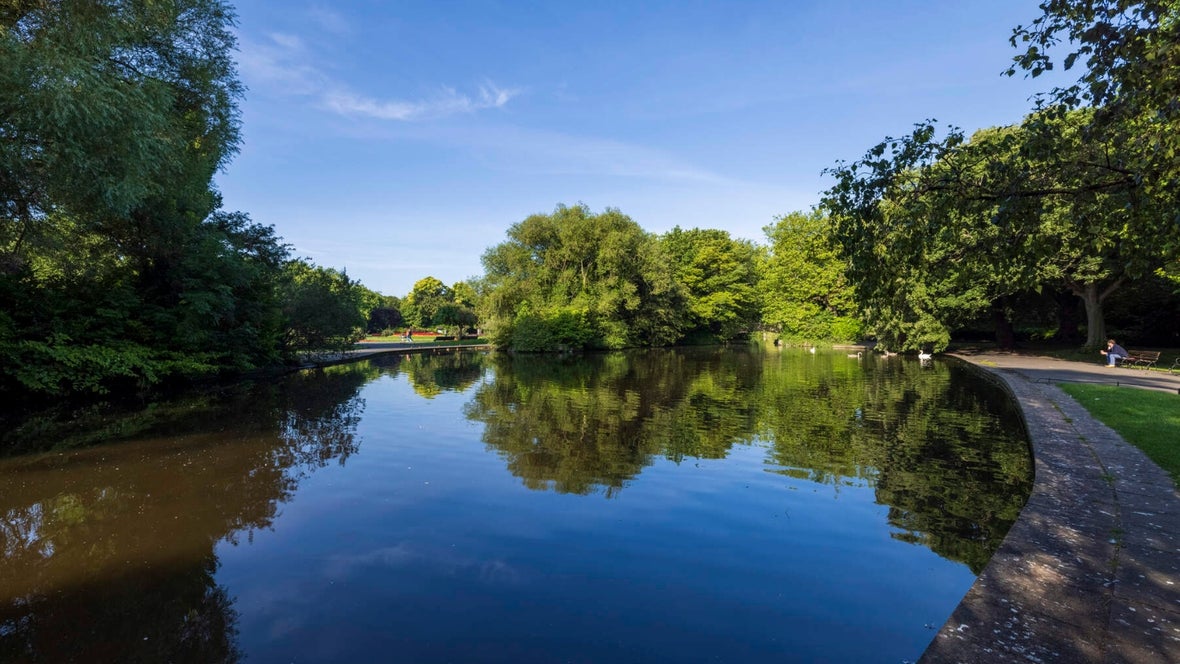
Fitzwilliam Square
Just a short walk from Grafton Street, nestled between Merrion Square and St Stephen’s Green this square marks the spot of U2’s video for The Sweetest Thing. Beautiful Georgian townhouses line either side of the square and this backdrop is instantly recognisable as the place where Bono and his wife Ali take a carriage along Fitzwilliam Place and Upper Fitzwilliam Street. The rest of the guys in the band appear too, along with a host of special guests from Boyzone to the Chippendales.
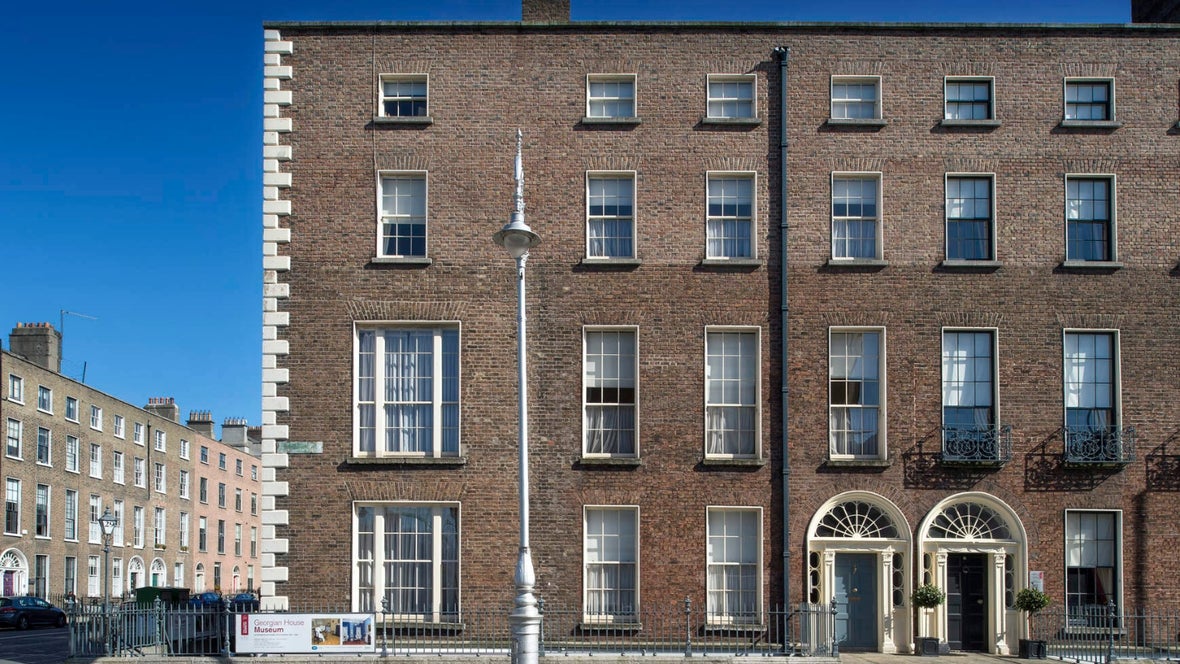
Temple Bar
No tour of U2's Dublin would be complete without a visit to The Clarence on Wellington Quay, which is owned by Bono and the Edge. This four star boutique hotel was built in 1852 and became the night spot of choice for the lads in the 90s. In 2000, the BBC TV programme Top of The Pops filmed U2 performing their hit Beautiful Day on the hotel roof, and crowds of people gathered at vantage points along the Liffey to catch a free glimpse of the boys playing.
In the same neighbourhood as The Clarence you'll find Dublin's cultural quarter Temple Bar, with its range of bohemian shops, trendy cafés and buzzing bars. From here, pop through Merchant’s Arch to find the iconic Ha'penny Bridge for the obligatory selfie as you cross the Liffey.
Further afield
There are many Northside pockets of Dublin that have U2 connections. Bono grew up on Cedarwood Road in Glasnevin, and he dedicates a song to his home on the album Songs of Innocence. While you’re here Glasnevin Cemetery is a must visit, and a pint at The Gravediggers pub wouldn’t go amiss. Songs of Innocence also recalls Bono’s happy summer days as a boy on Dollymount Strand, the glorious stretch of sand along North Dublin Bay that’s been a playground for Dubliners for generations.
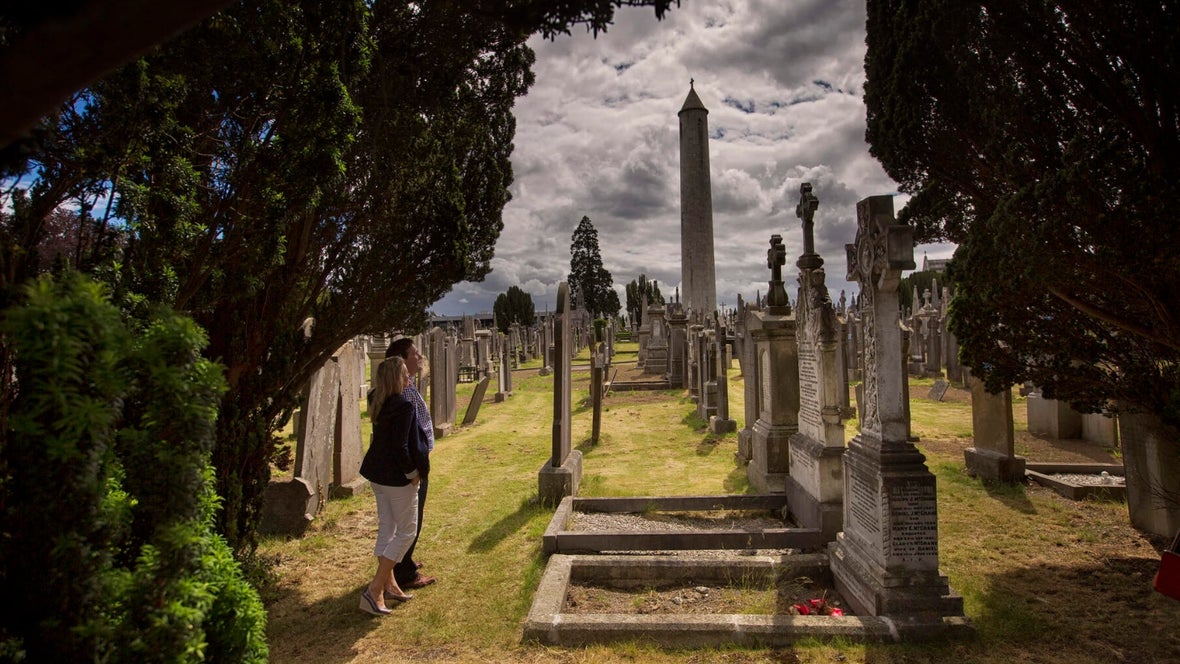
Not far from Dollymount is Mount Temple Comprehensive school, where the four members of U2 first came together after Larry Mullen pinned a note on the school notice board seeking potential bandmates.
On the Southside, a stroll on Sandymount Strand provides a reminder of how frequently a young U2 were photographed here, with the distinctive striped Poolbeg Chimneys in the background. The landmark is also in their Pride (In the Name of Love) video, filmed in 1984.
Further down the coast, the picture postcard village of Dalkey is a popular stomping ground for Bono, who lives in neighbouring Killiney. The seemingly infinite view of the Irish Sea from Vico Road provided the inspiration for the album No Line on the Horizon.
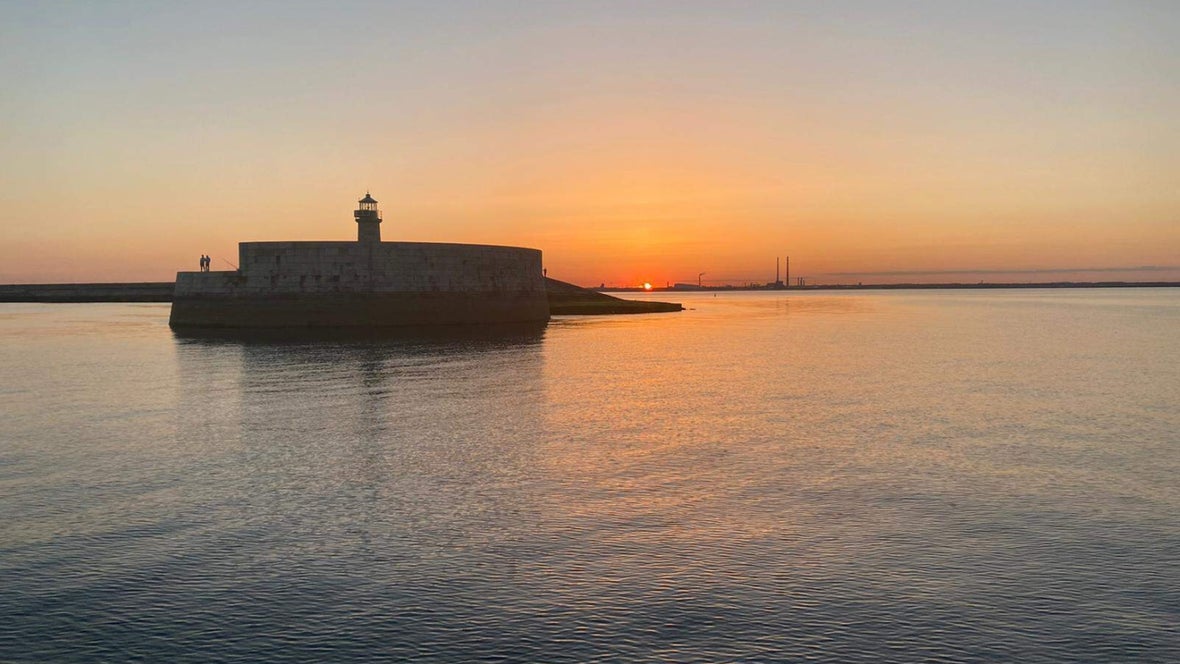
Get out and experience Dublin’s music scene
Now that you’ve tracked down the places that made U2 famous, discover the ‘next big thing’ at a gig near you. Pick from a variety of festivals and events for your next night out.
